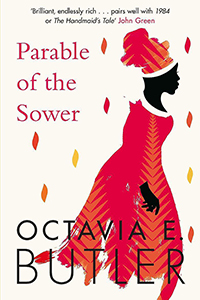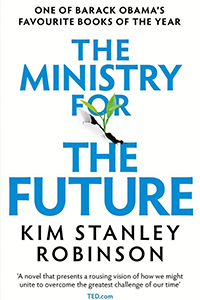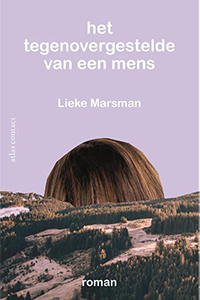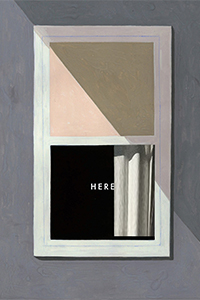
Climate fiction – the reading list
From rapidly rising global temperatures to the increasing frequency of catastrophic weather events, every year the effects of the climate crisis become more apparent. Can literature help us envision a life after climate change?
Climate scientists give us hard numbers; concrete scenario’s for how nature and our environment will change with rising global temperatures. But what will society look like in these scenarios? We may not even be able to imagine. The climate fiction, or cli-fi genre, offers a solution in this regard. It asks the reader not only to grapple with the consequences of climate change for the environment but the role of society in that vulnerable system and the human response to the potentially devastating consequences of an avoidable crisis. Literature appeals to the imagination: imagine what the world would be like if…
All books in the list below are part of the collections of Leiden University Libraries (UBL), but they represent only a selection of the many climate-related fiction and non-fiction books the UBL owns. Every book is available for loan by following the link under the title or by searching our catalogue.

J.G. Ballard, The Drought
(originally published as The Burning World)
1964
In the 1960s, J.G. Ballard belonged to a new generation of science fiction writers who somewhat let go of the hard demands for scientific accuracy and concentrated on more experimental and speculative work. The Drought (1964) is a good example of this and is a classic in climate fiction. The main character, Dr Charles Ransom, lives in a world that has become virtually unliveable due to extreme and prolonged drought. We follow him from the mountain village of Hamilton, where he initially tries to survive, to the coast, where he and others end up in a struggle over the little water that is still available. Ballard asks the reader to reflect on what it means to survive in a world in which every form of government or community is collapsing due to far-reaching climate disruption, while only the government can guarantee the survival of the community. Important detail: the drought is caused by industrial pollution.

Octavia Butler, Parable of the Sower
1993
Apocalyptic events have an important role in many climate novels. That is certainly the case in Octavia Butler's Parable of the Sower, in which sixteen-year-old Laura Oya Olamina tries to survive in a southern California that is falling apart due to severe drought, rise in temperature and resulting food shortages. Laura lives in a protected area that turns out to be less secure than she had hoped. After an attack on the neighbourhood, she has no other option than to flee to northern California in the hope of finding water there. During her journey, a mixed group dependent on one another for survival slowly develops. The diverse, multiracial group moves north as Laura begins to develop her own religion: Earthseed. Butler makes the reader reflect on racism and climate disruption, but despite all the suffering and horrors found in the book, he also points towards several possible solutions: empathy and maybe even a new religion.

Margaret Atwood, Oryx and Crake
2003
Canadian writer Margaret Atwood is best known to the public for her novel The Handmaid's Tale, a 1985 feminist dystopian novel that was turned into a critically acclaimed television series in 2017. Lesser known but equally fascinating is her climate trilogy, which consists of the novels Oryx and Crake (2003), The Year of the Flood (2008) and MaddAdam (2013). Oryx and Crake is the first book in the series and tells the story of Jimmy and his genius friend Glenn. In the novel, Jimmy looks back on his complex friendship with Glenn who invents a kind of miracle pill that they market together under the name Blysspluss. Jimmy, however, tells his story from an empty world with hardly any living people in it. Slowly it becomes clear that Glenn's miracle pill was a highly destructive weapon that caused not just sterility, but a global pandemic. Glenn's reasoning for inflicting this destruction is his deep-seated belief that humans are inferior creatures who can only cause irreparable damage to their natural environment. By solving overpopulation in this radical way, he believes he is doing nature a favour. Oryx and Crake is a sweeping reflection on the arrogance of scientists and the potential scope of eco-fascism.

Kim Stanley Robinson, The Ministry for the Future
2020
Science fiction writer Kim Stanley Robinson has primarily made his mark in climate fiction. It is impossible to count on one hand the number of novels he has written that focus on climate disruption. His latest novel, The Ministry for the Future, is another in-depth reflection on the issue of societal disruption due to climate change. Robinson's novel begins in 2025 and moves smoothly between factual reflections on political, financial, and environmental issues on the one hand, and developments within the Ministry for the Future on the other. The ministry is tasked with guiding society towards a climate-neutral world and facilitating adaptation where necessary, while various governments refuse to act. Slowly but surely, the ministry succeeds in initiating change, but achieving this requires the settling of several very complex ethical dilemmas. How far are we willing to go to build an ecologically just world? What exactly is violence in this context? And what do we think about so-called black-ops and eco-terrorism that could give governments a push in the right direction? Robinson forces you to think deeply about extremely complex issues and you, as a reader, will not come out unscathed.

Maartje Smits – Hoe ik een bos begon in mijn badkamer
2017
Hoe ik een bos begon in mijn badkamer is the second collection of poems by the poet and artist Maartje Smits (1986). The author's website states that in this book 'image and language enter into a dialogue about climate change, 'nature', 'human beings', washed-up whales, salmon cannons, oyster girls, ecoducts and deer'. As can be seen from the quotation marks, this collection questions the seemingly clear distinction between humanity and nature. Most poems lack a human lyrical subject; rather it is nature that is given a voice. Smits often seeks the interface between natural and inanimate objects, an ambiguity also evoked in her images. Due to the position from which the photo was taken, a motorbike under a white tarpaulin against a blue wall initially looks like an iceberg at sea. It is not difficult to guess what connects motor and iceberg due to the overarching theme.

Lieke Marsman, Het tegenovergestelde van een mens
2017
Lieke Marsman (1990) tells the story of Ida, a young climate scientist who travels to the northern Italian Alps to investigate the consequences of the removal of a hydropower dam. The storyline is interspersed with poems and long essay-like passages. Marsman links the climate problem to a search for human identity. According to her, the image that people have of themselves is the main cause of current climate problems. From the anthropocentric world view (which is rooted in age-old religious and humanistic traditions) it is justified to dominate nature. Marsman tries to undermine this image using literary imagination. As a child, Ida tries to imagine she is a cucumber, later she moves to the point of view of a table. The novel also shows how difficult it is to think outside the box: "Imagine what it is like to be a thing, […] a thing that grows, but does not feel, it asks the utmost of your capacity for empathy".

Richard McGuire, Here
2014
The geological processes underlying climate change take place over several generations, sometimes tens of thousands of years. Imagining time on that scale is quite a hard thing to do. Here by Richard McGuire (1957) manages the (almost) impossible and even goes a step further. McGuire worked on this graphic novel for 15 years. The drawings represent an unspecified place where (at a certain moment in time) a house is located. The panels show what the place looks like at different points in time, for example in the years 1783 (the house catches fire), 1960 (a couple argues) and 1971 (there is a party), but also: 100,097 BC! On the spot where the house will one day be built, dinosaurs graze endless primaeval forests. The book also offers a glimpse into the future. In the year 2111 we see the rising water pouring in through the window; in 2213 futuristically dressed tourists are given a tour of the site, and in 22,175 (!) hummingbird-like creatures dance around a huge calyx. Here present these periods in time side by side and on top of one another on the page. Past, present, and future rhyme in both horrifying and wonderful ways.
Contact your faculty liaison
Is a book missing on this list, or would you like UBL to purchase a climate fiction title that is not yet available in our collections? Contact your faculty liaison.
